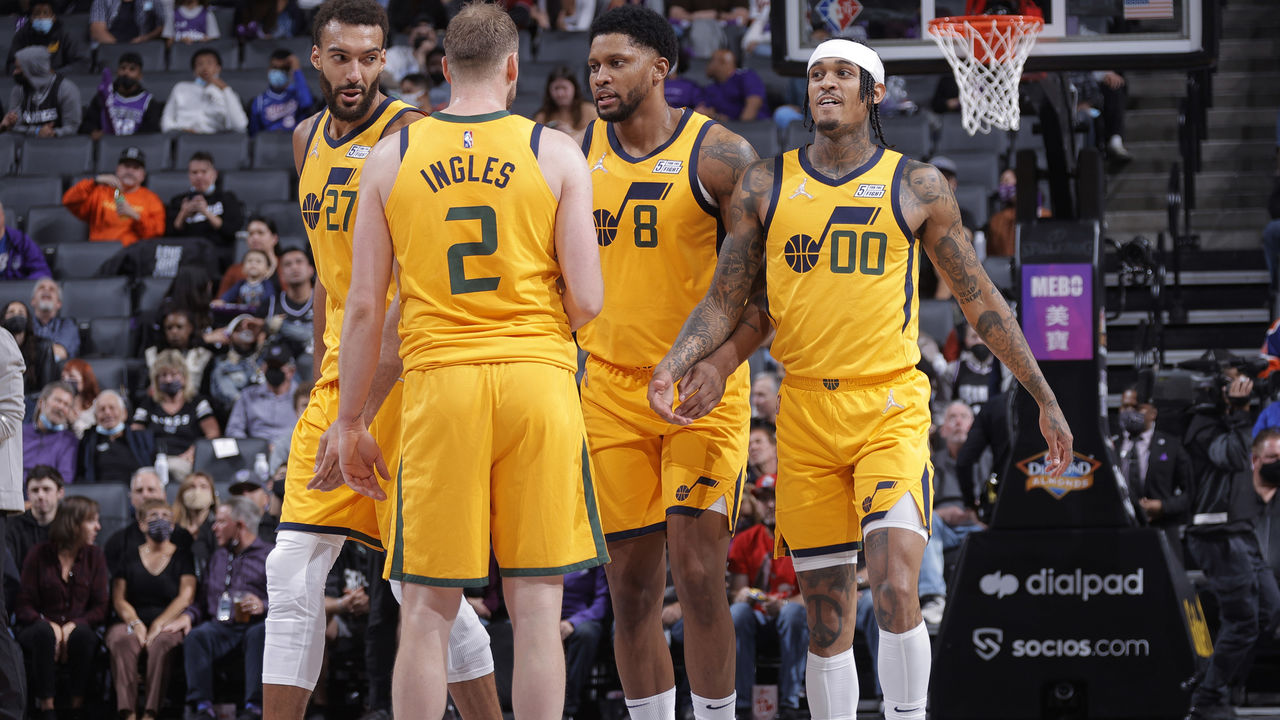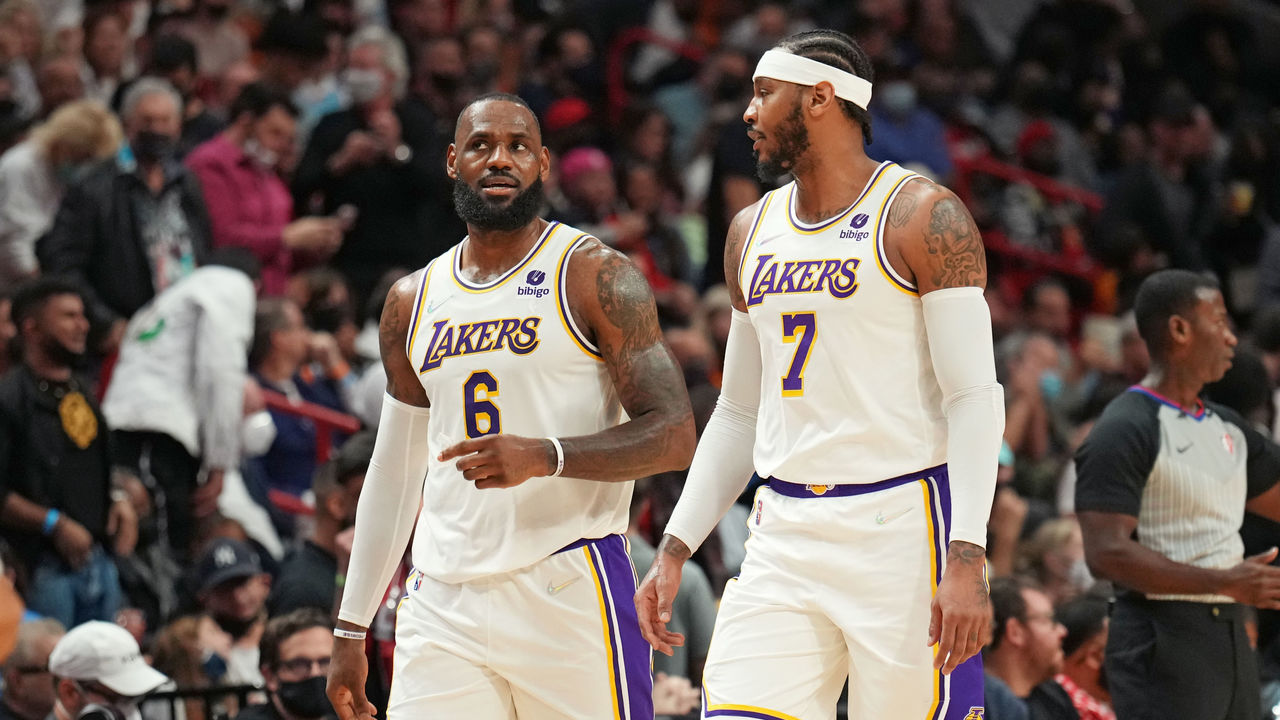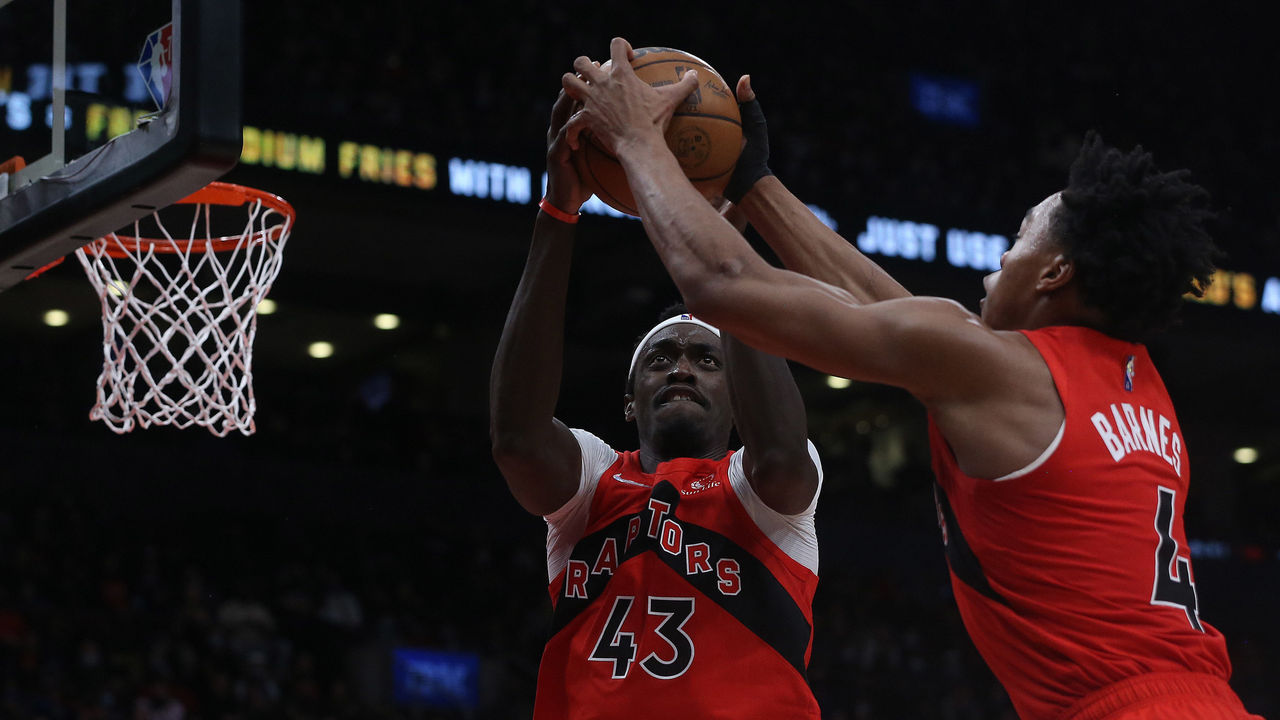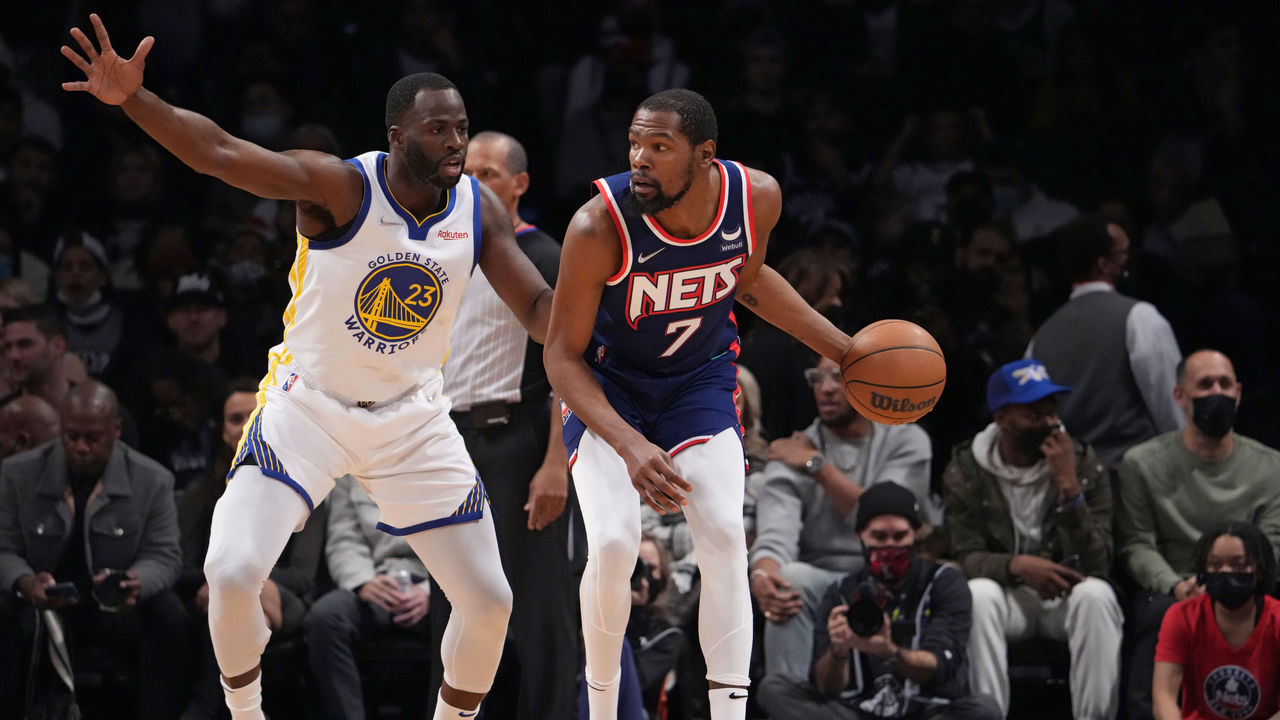What this season has taught us about the pros and cons of going center-less
Many people saw the Jazz signing Rudy Gay this past offseason as a direct response to the second-round loss the Clippers had just handed Utah. The Jazz had compiled the NBA's best regular-season record, but just as the Rockets had done to them in previous years, the Clippers ran them out of the postseason with center-less lineups that switched every ball screen and spread the floor with shooters. The enduring image of Utah's playoff exit was Rudy Gobert futilely sprinting out to the corner as L.A.'s cadre of wings splashed threes.
Gay, a onetime wing who's spent his career steadily climbing the positional ladder, was supposed to give the Jazz the option to roll out small-ball lineups of their own to counter the ones that kept unraveling them. That notion always seemed a bit overstated. Gobert was hardly the chief culprit in their playoff defeat, and it's hard to imagine a scenario in which having Gay on the floor in his place would give Utah a better chance to win - but it looks patently absurd now.
The Jazz rarely go center-less when they're healthy, opting to roll with Hassan Whiteside when Gobert hits the bench. And when Gobert's recent stint in health and safety protocols forced them to downsize, it very much exposed the limits of that strategy with their personnel. They've played 155 minutes with Gay at the five, and in the non-garbage part of those minutes, they've been smoked by 14.2 points per 100 possessions while putting forth a 122.6 defensive rating, according to Cleaning the Glass. Utah's opponents have gotten to the rim with alarming frequency (42.9% of shots within four feet) during those minutes, finishing there at a 70.1% clip.
That's not really about Gay, who's been a solid bench piece for the Jazz and produced great results when sharing the frontcourt with Gobert. The issue, as it was in the series against the Clippers, is Utah just can't stay in front of anyone on the perimeter, with guys like Joe Ingles, Jordan Clarkson, Bojan Bogdanovic, and Donovan Mitchell regularly getting beat off the bounce and providing each other minimal cover. It turns out removing the team's backline anchor from the mix doesn't improve matters.

When it comes to stylistic anomalies in the NBA, it can be difficult to distinguish outlier scenarios from trendsetting. The term "copycat league" gets thrown around a lot, and it's true that novel tactical and team-building concepts, when successful, tend to catch on like wildfire. But there are plenty of instances when teams misinterpret what made those trends work in the first place, and they fall short in their attempts to replicate them.
The Warriors spawned small-ball imitators after unleashing Draymond Green at center and riding that trump card to a championship and a 73-9 season. The trend has continued apace, and a handful of teams - like those aforementioned Clippers and the Tuck-wagon Rockets of yesteryear - have executed it successfully. Still, the inherent challenges of pulling off big-minute center-less basketball have become evident in the seasons since it went mainstream.
It's hard to play small in a league in which arguably the two best players are centers, rivals are thriving with jumbo lineups, the most recent champions won with size, and the reigning Finals MVP is the most dominant interior scorer in a generation. We've seen a few teams play small for extended stretches this season. And while each club has its particular strengths and weaknesses, those teams collectively offer a pretty clear picture of the benefits and drawbacks of that approach.
The teams running center-less lineups this campaign are mostly doing so out of necessity. The Lakers turned to LeBron James at center because they badly needed to open up the floor, and because Dwight Howard and DeAndre Jordan were largely ineffective. However, they didn't fully lean into it until Anthony Davis got injured. The Raptors and Hornets haven't prioritized traditional big men in their roster-building projects, but both have reportedly been active in trade talks involving starting centers. Only the Warriors, with the bones of their original title team still in place, seem to be doing it as a preference, and they still start Kevon Looney and drafted a 7-footer second overall last year.
There are a few characteristics that tend to make small-ball lineups effective. Being a great isolation scoring team isn't a prerequisite (the pre-Durant Warriors didn't exactly operate that way), but it certainly helps (see: Harden's Rockets). You can have five shooters dotting the arc, but you won't do much with the space you've created if none of them can consistently break a defense down off the dribble. Last year's Clippers were one of the best jump-shooting teams ever, but they wouldn't have won that series if they hadn't also shredded the Jazz with dribble penetration.
The ability to switch defensively is one of the perks of playing smaller and the benefits can be manifold. When done well, switching can flatten out north-south action, keep the defense out of rotation, and force the offense into isolation. But it's one thing to switch and another to switch well. Even that Clippers team struggled with their switching principles last postseason, getting picked apart at points by Luka Doncic and Mitchell. The Rockets teams that executed the strategy to near perfection were stocked with stout, physical defenders who closed gaps on their exchanges and refused to get bumped off their spots in one-on-one defense. The Jazz, with the exception of Royce O'Neale, don't really have anyone who fits that description.

The Lakers have a similar issue. Russell Westbrook's shooting limitations mean they need guys like Malik Monk, Carmelo Anthony, and Wayne Ellington to provide the spacing in their LeBron-at-center lineups. Unfortunately, those are all porous point-of-attack defenders, and Westbrook's defensive foibles only add fuel to the tire fire. So the Lakers can downsize and switch all they want, but that doesn't accomplish much when nobody can stay in front of their checks. Opponents parade to the rim against L.A.'s small-ball units, and they're met with little resistance when they get there. No team surrenders more points in the restricted area.
LeBron's combination of vertical athleticism, instincts, and size (he has basically the same proportions as Bam Adebayo) theoretically makes him an ideal small-ball center. But according to Cleaning the Glass, he never played more than 3% of his minutes at the five in any season until this one, spending a whopping 43% of his court time there. The Lakers score a robust 115.4 points per 100 possessions in those minutes, but they give most of it back at the other end by allowing 113.
Offensively, the benefits are evident. In those lineup configurations, 41.1% of the Lakers' shots come at the rim. It's no coincidence that James is finishing plays as a roll man more frequently than he has in the seven years that NBA Advanced Stats has tracked the play type, and he's scoring a blistering 1.38 points per possession when he does so. His two-man game with Monk has been particularly fruitful. It's been fun to watch James play the back end of the pick-and-roll and otherwise avail himself of open pockets of space as an off-ball player. He's also scoring more efficiently out of the post (1.16 PPP) than he has in any season on record and trails only Kevin Durant among players who've registered at least 50 post possessions.
Perhaps James could have anchored the backline on defense in his athletic prime, even with a flimsy perimeter shell around him. But this version of him doesn't seem particularly interested in boxing out or making repeated low-man rotations, which is totally fair. He's 37! And still carrying an enormous offensive workload! He showed in the Lakers' win over the depleted Nets on Tuesday that he's still capable of doing the defensive grunt work when he dials his effort level all the way up. But it's asking too much of him to perform like that night after night, at his age, with the types of players who are flanking him in those small lineups.
Davis is back now, but if that Nets game was any indication, LeBron at center remains the Lakers' preferred look when Davis is on the bench. Running those lineups against opposing transitional units rather than against starters should help smooth out some of the issues.

To that end, the success the Hornets are having with the 6-foot-7 P.J. Washington as a big-minute backup center behind Mason Plumlee is promising. Washington's an enticing small-ball five for numerous reasons: he's a versatile scorer who can roll, pop, spot up, and put the ball on the floor. But while he's a solid switch defender, he isn't really a plus in any other aspect of defense, least of all rim protection.
Consequently, those lineups really struggle defensively, especially when they go against opponents' top units. But they still generate a huge positive scoring margin because Charlotte deploys them against mixed bench groups, and the team scores a ridiculous 120.2 points per 100 possessions with Washington at the five.
Still, the upstart Hornets aren't going anywhere serious as long as they rank bottom-five in the league in defensive efficiency. They try out all manner of coverages even when small, from switching to blitzing to soft-hedging to zoning up. Any which way, their opponents get to the basket, and they shoot 67.1% in the restricted area with Washington contesting, the second-worst mark among qualified players contesting at least four rim shots a game.
Plenty of other factors have contributed to the Hornets' defensive struggles - guys like LaMelo Ball and Terry Rozier gamble wildly or get lose in their chaotic scheme - but their sponginess on the interior is the chief culprit. There's a reason Charlotte keeps popping up in rumors regarding Myles Turner and Richaun Holmes.

As for the Raptors, it's hard to characterize what they're doing as "small ball" because they're undersized and oversized simultaneously. They don't roster a player taller than 6-foot-9, and their starting point guard is charitably listed at 6-feet in shoes, but they also regularly roll out lineups with four power-forward-sized guys. An issue they run into in those alignments is they don't have the shooting to give themselves the benefit of four-out spacing even when there's no center on the floor.
Toronto's new go-to starting lineup of Fred VanVleet, Gary Trent, OG Anunoby, Scottie Barnes, and Pascal Siakam features just two threatening 3-point shooters. That helps explain why it's produced an underwhelming 106.4 points per 100 possessions even though 20% of that lineup's offensive possessions come in transition. The center-less version of the Raptors still doesn't get to the rim much, partly due to the relatively poor spacing and partly because of how light they are on bursty downhill attackers. Those limitations leave them susceptible to zone schemes, one of which the Blazers just used against them to great effect.
At the other end, the Raptors do a good job suppressing opponent rim shots when they go small, but that comes with a steep price. With Siakam as the nominal center, 15% of opponent shots are corner threes, thanks to how aggressively Toronto doubles the post and sends help crashing in on drives. It's hard to blame the Raptors, given their opponents shoot 72% at the rim in those minutes. And that aggressive help generates a boatload of turnovers, which fuels their transition offense.
But where most teams go small as a means of staying out of rotation, Toronto willingly puts itself into rotation regardless of lineup construction, which leaves it vulnerable on its own glass and often results in sending opponents to the stripe. The Raptors rank 28th in defensive rebound rate and 27th in opponent free-throw rate.

Of course, the simplest answer to the question of what separates a good center-less lineup from a bad one is ... Draymond. His unique ability to anchor the Warriors' defense as a 6-foot-6 playmaker is what made the team's famed Death Lineup so lethal and helped shepherd the (somewhat misguided) idea of a small-ball revolution.
Crucially, you can play any style of defense with Draymond at center. He can obviously switch, but he can also play drop, quarterback a zone, and provide monstrous low-man help. He can do anything you'd ask a traditional big man to do, but he can do it faster because of his foot speed and the processing speed that allows him to anticipate sequences of moves and countermoves.
As a result, the Warriors remain completely anomalous as a small-ball team. They boast a 97.4 defensive rating and outscore opponents by 15.9 points per 100 possessions with Green at the five this season, per Cleaning the Glass. Thanks mainly to his proactive rotations, Golden State is better at keeping the ball away from its own basket than any team. It allows opponents to take just 26.7% of their shots at the rim, and that number drops to 24.4% when Green moves to center. Who needs rim protection if you can prevent opponents from getting to the rim in the first place? Sometimes the best interior defense is good perimeter defense.
The Warriors are also a rare breed that can go small and still clean the hell out of their own glass, as they currently own the league's best defensive rebound rate. They get all of the upside with none of the downside.
Those aren't the only teams who've gone small this season, just the most prominent examples. We've seen the league-leading Suns break it out in spots, particularly against the Warriors, and may see them return to that well if the teams continue on their collision course and meet in the West finals. One way or another, center-less lineups will have a part to play in the postseason.
The bottom line: going small almost always presents a trade-off of some kind, and it's hard to do it well. But if you can, it's a hell of an ace to have up your sleeve.
HEADLINES
- NBA Cup quarterfinals: Heat-Magic, Knicks-Raptors, Suns-Thunder, Spurs-Lakers
- NBA fines Magic's Bane $35K for throwing ball at Anunoby
- Projecting rosters for USA vs. World All-Star Game
- Suns overcome Edwards' 40 points to snap T-Wolves' 5-game win streak
- Raptors' Barrett to miss at least another week due to knee injury